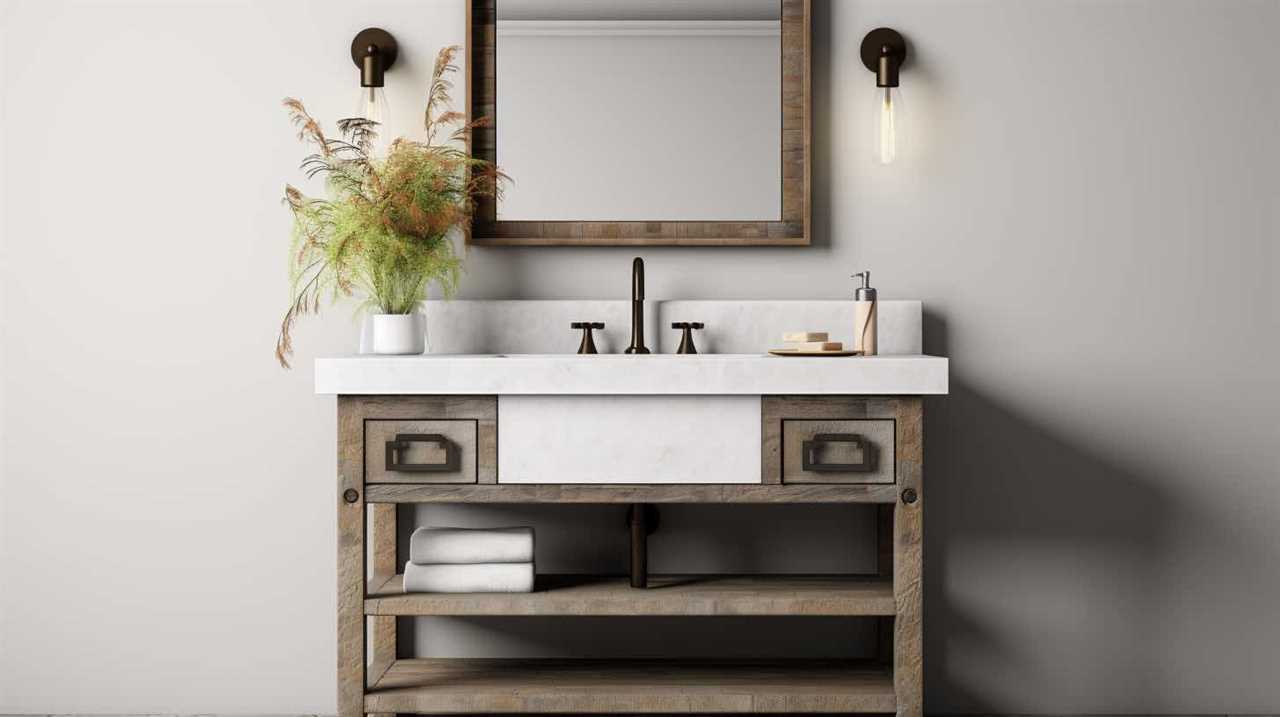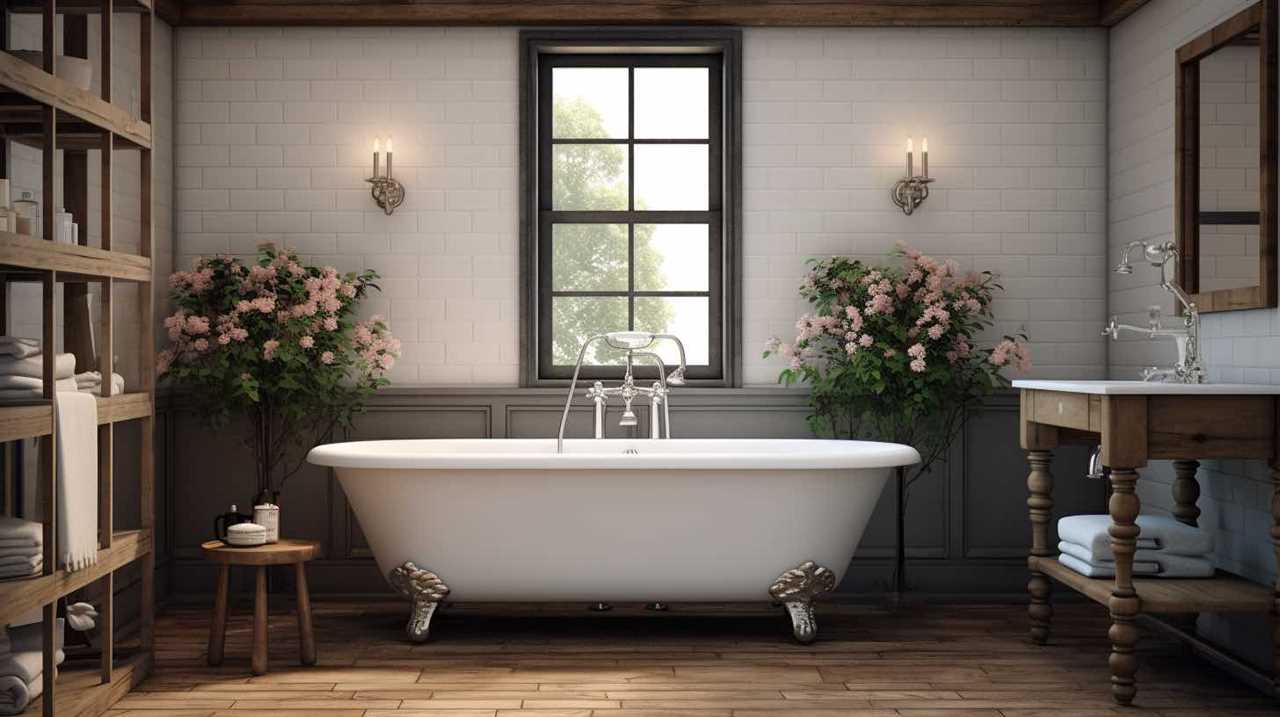Have you ever entered your bathroom and immediately noticed a strong smell of urine? This can be not only unpleasant but also embarrassing when you have guests over.
In our article, we will explore the common causes of bathroom urine odor and provide you with solutions to eliminate this issue. From poor ventilation to leaky toilets, we’ll guide you through the steps to ensure your bathroom stays fresh and odor-free.
Let’s take control of this problem together.
Key Takeaways
- Medical conditions and medications can contribute to urine odor in the bathroom.
- Using urine odor neutralizers and avoiding ammonia-based cleaners can help eliminate the smell.
- Improving ventilation and air circulation can prevent moisture buildup and bacterial growth.
- Checking and maintaining toilets and plumbing regularly can prevent urine odor issues.
Common Causes of Bathroom Urine Odor
There are several common causes of urine odor in our bathroom. One possible cause is certain medical conditions. Conditions like urinary tract infections, bladder infections, and kidney infections can lead to a strong and unpleasant urine odor. It’s important to consult a healthcare professional if you suspect a medical condition as the underlying cause.
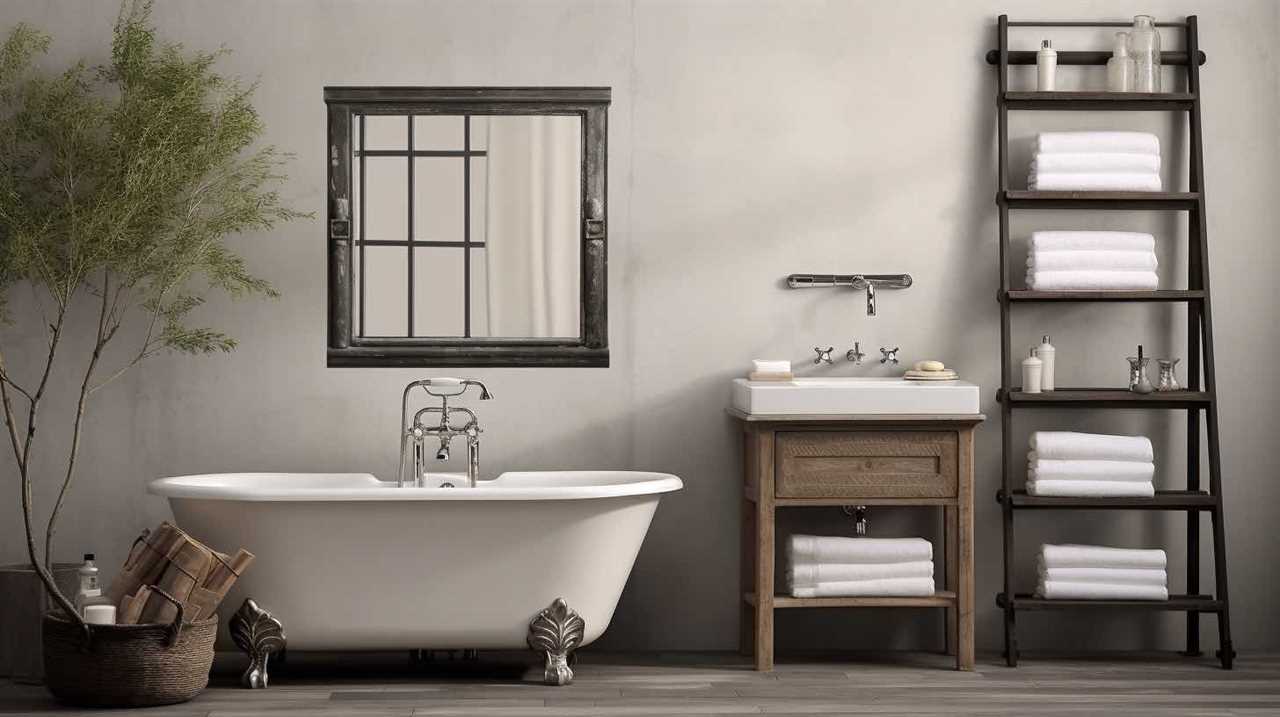
Another cause of urine odor in the bathroom is the use of certain cleaning products. Some cleaning products contain ammonia, which can mix with the urine and create a strong odor. It’s recommended to avoid using ammonia-based cleaners in the bathroom to prevent this issue.
Poor Ventilation and Air Circulation
To continue our discussion on the causes of urine odor in the bathroom, poor ventilation and air circulation can contribute to the unpleasant smell.
Ventilation problems can result in moisture buildup, creating the perfect environment for bacteria and mold to thrive. When the air in the bathroom isn’t properly circulated, the moisture from showers, baths, and toilet usage can linger, causing a foul odor.
Inadequate ventilation can also lead to condensation on surfaces such as walls and ceilings, which can further promote the growth of bacteria and mold.
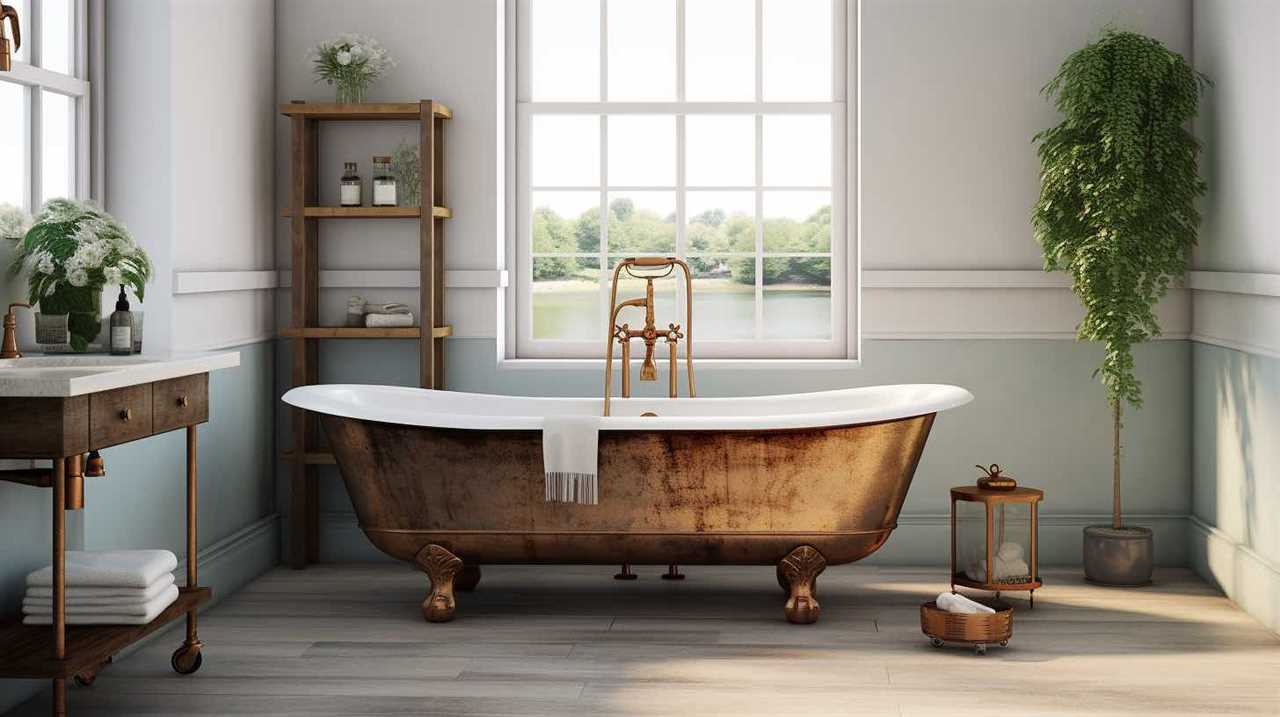
To address ventilation issues, it’s important to ensure that the bathroom has proper exhaust fans or windows that can be opened to allow for fresh air to flow in and moisture to escape. Regularly cleaning and maintaining these ventilation systems can help prevent urine odor and promote a fresh and clean bathroom environment.
Leaky Toilets and Plumbing Issues
Leaky toilets and plumbing issues can contribute to the persistent urine odor in our bathroom. One common culprit is a faulty toilet seal. The seal is a wax ring that sits between the base of the toilet and the floor. Over time, this seal can deteriorate or become misaligned, allowing urine and other waste to seep out and cause unpleasant odors.
Another potential issue is sewage backup. If there are blockages or clogs in the plumbing system, sewage can back up into the toilet bowl, resulting in a strong urine smell.
To address these problems, it’s important to regularly check and replace the toilet seal if necessary. Additionally, addressing any plumbing issues promptly can prevent sewage backup and further odor problems.
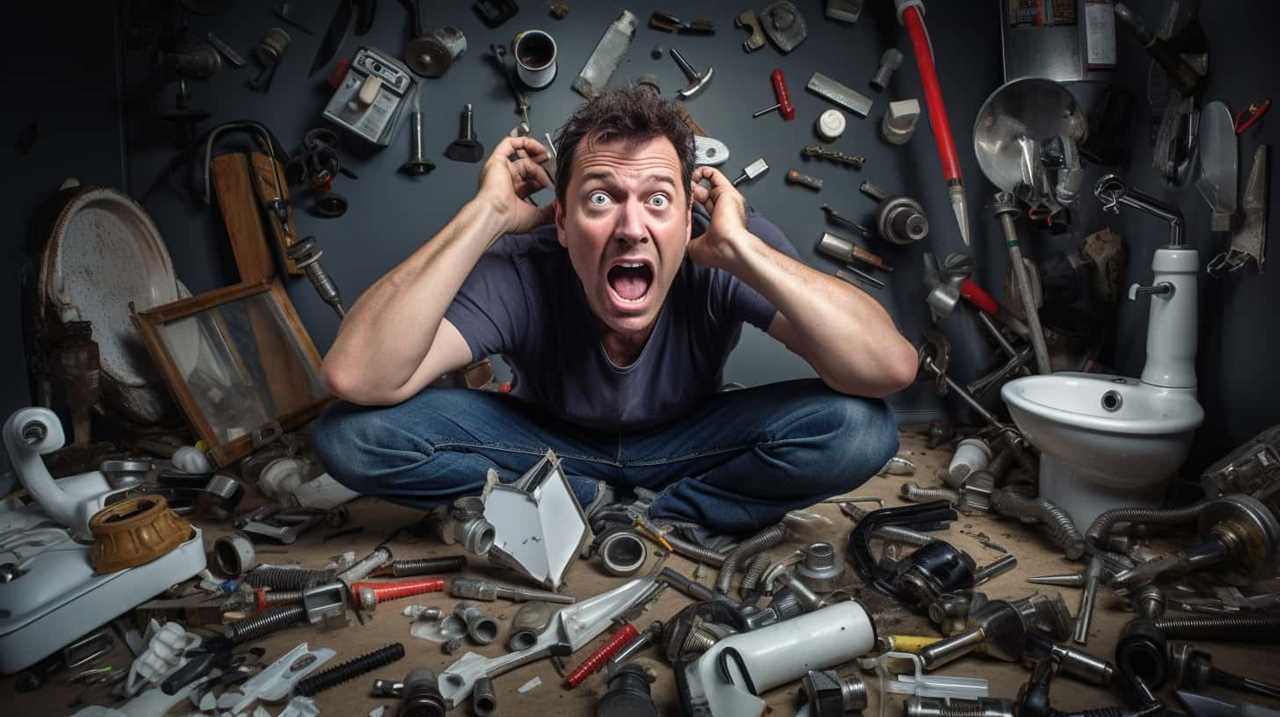
Now, let’s move on to the next section and explore inadequate cleaning practices.
Inadequate Cleaning Practices
One of the main causes of a persistent urine odor in our bathroom is our inadequate cleaning practices. When we don’t properly clean our bathroom, it can lead to the buildup of urine residue and bacteria, resulting in an unpleasant smell. Here are some reasons why improper hygiene can contribute to the problem:
- Neglecting to regularly clean the toilet bowl, especially around the rim and under the seat, allows urine to accumulate and bacteria to grow.
- Failing to clean the floors, walls, and other surfaces in the bathroom allows urine splatters and spills to linger, creating an environment for bacterial growth.
- Not cleaning bathroom accessories like toothbrush holders, towels, and shower curtains can also contribute to the presence of bacteria and the persistence of the urine odor.
Presence of Urine on Surfaces and Fabrics
When we neglect to clean surfaces and fabrics in the bathroom, urine can accumulate and contribute to the persistent odor. It’s important to regularly clean these areas to prevent the buildup of urine and eliminate the unpleasant smell.
Surfaces such as floors, countertops, and toilet seats should be wiped down with a disinfectant cleaner to remove any urine residue.
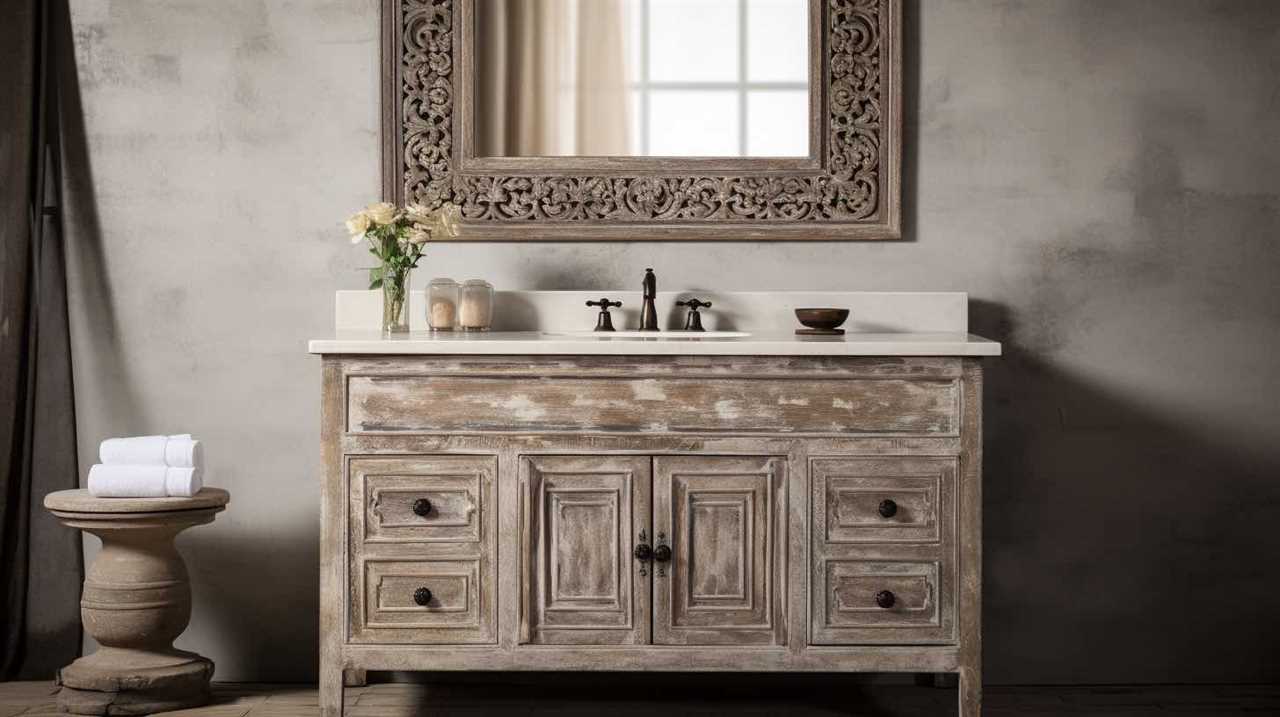
Fabrics like shower curtains, bathmats, and towels should be washed frequently in hot water with a strong detergent to remove any urine particles.
Additionally, using urine odor elimination products can be effective in neutralizing the smell.
Frequently Asked Questions
How Can I Prevent My Bathroom From Smelling Like Urine in the First Place?
To prevent urine odor in the bathroom, we follow these bathroom cleaning tips: clean the toilet regularly, use an odor-neutralizing spray, ensure proper ventilation, and wash bathroom rugs and curtains frequently.
Can Using Air Fresheners or Scented Candles Cover up the Urine Odor in My Bathroom?
Using air fresheners or scented candles may temporarily mask the urine odor in your bathroom. However, their effectiveness is limited, and they only provide a temporary solution. Regular cleaning and addressing the underlying issue is crucial for a fresh-smelling bathroom.

Are There Any Health Risks Associated With a Lingering Urine Odor in the Bathroom?
There may be health risks associated with a lingering urine odor in the bathroom. Proper ventilation solutions can help eliminate the smell and reduce the risk of bacteria growth, promoting better air quality.
What Are Some Natural Remedies I Can Try to Eliminate Urine Odor in My Bathroom?
To eliminate urine odor in our bathroom, we can try some natural remedies. These remedies are effective in getting rid of the unpleasant smell and creating a fresh environment.
Could the Urine Smell in My Bathroom Be a Sign of a More Serious Plumbing Problem?
The urine smell in our bathroom could indicate a more serious plumbing problem. It’s important to schedule a plumbing inspection to identify any underlying issues. Additionally, professional cleaning might be necessary to eliminate the odor completely.
Conclusion
So, if you’ve been wondering why your bathroom smells like urine, there are a few common causes to consider.

Poor ventilation and air circulation, leaky toilets and plumbing issues, inadequate cleaning practices, and the presence of urine on surfaces and fabrics can all contribute to this unpleasant odor.
By addressing these issues and maintaining proper hygiene, you can eliminate the smell and create a fresh and clean bathroom environment.
Now, are you ready to say goodbye to that unwanted urine odor?
